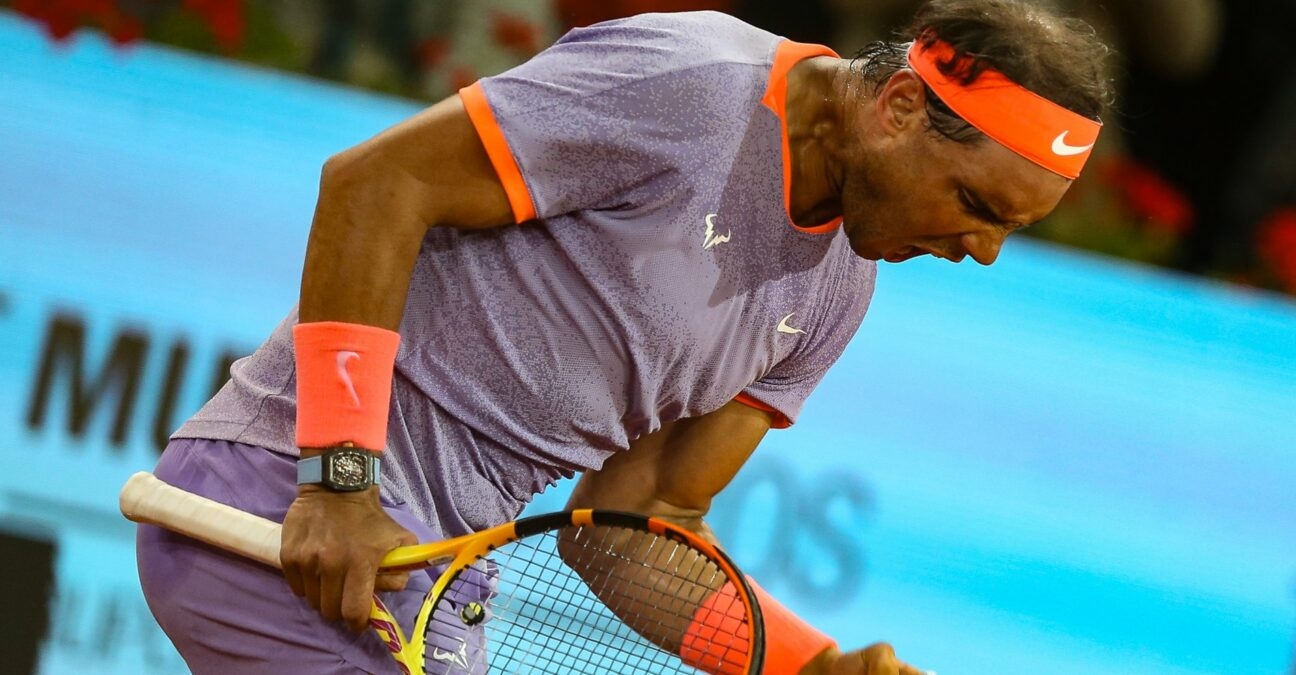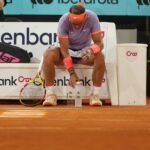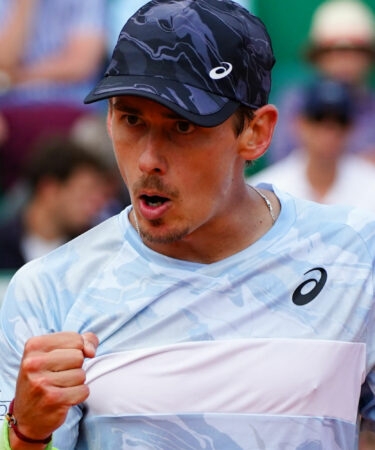Analysis: Nadal’s serve and movement the biggest improvements from Barcelona to Madrid
Stats from TennisViz and Tennis Data Insights show how much the Spaniard has progressed in the space of less than two weeks
 Panoramic / Panoramic
Panoramic / Panoramic
Rafael Nadal was quick to shoot down any suggestion that the real Nadal is back, just yet, even if he was mightily impressive in beating Alex de Minaur in the second round of the Madrid Open on Saturday.
Nadal knows his body better than anyone, of course, but the stats, it seems, are encouraging. His serve, in particular, was vastly improved in Madrid from Barcelona, perhaps an illustration of both how Nadal is feeling and how he is beginning to trust his body a little more each week. And just as encouragingly, the percentage of points he won when turning a defensive position into an attacking one – “steal points” – was also way up.
Now Nadal knows that clay is probably De Minaur’s weakest surface and he also knows the Australian was not at his best on Saturday in the cauldron of a Caja Magica atmosphere made even greater by the fact that the roof was closed. But there’s no question that he’s moving in the right direction, able to compete at high intensity for longer periods even than a week ago, something he feared his abdominal issues might not allow at this stage.
Serve speeds significantly up
In Barcelona, Nadal pretty much rolled his serve in, wary of pushing things too much, as he recently admitted he may have done in Brisbane in January, when he returned from a year away following hip surgery and immediately looked great, only to pick up another injury that caused him to miss the Australian Open and the next two and a half months.
In Madrid, against De inaur, the 14-time Roland-Garros champion upped the speed right from the start, something visible to the eye and born out by the stats. Our friends at TennisViz and Tennis Data Insights charted his performance and it’s clear, from the following two charts – which compare the two Nadal-De Minaur matches, that he has improved in every measure.

In the 12 categories recorded, Nadal improved in 11 of them, the only one not going up being the percentage of second serves unreturned. The big increases are in 1st serve points won (up from 66 percent to 74 percent); 2nd serve points won (a huge leap from 43 percent to 63 percent).
His average 1st serve speed was up from 102mph to 113mph, with his fastest in Madrid a 121mph delivery, 6mph fastest than his best the previous week. His average 2nd serve speed was also up, from 87mph to 95mph, making it that much more difficult for De Minaur to dominate from the baseline.

More variety on serve in Madrid
Nadal’s serve in Barcelona was also pretty predictable. Not wanting to overstretch himself, he generally sliced the ball to the De Minaur backhand. Right from the start in Madrid, he was able to vary the serve much more, keeping his opponent more off balance than in the previous week.

Nadal still attacked the De Minaur backhand with the lefty swing serve for the most part. But in Barcelona, he served to the De Minaur forehand only six times in all. In Madrid, it was nine and he was able to vary his attack much more. On the ad side, he upped the number of serves down the T (into the forehand) from two to five. It might not sound much, but it helped.

Movement and defensive skills also improving
Part of Nadal’s genius on clay over the years has been his incredible movement, of course. At 37 and nearly 38, his speed is not quite what it once was and in Barcelona it was obvious that there were some movements he was not making; stretching wide for a slice backhand on the run, for example.
In Madrid, though, he was able to do that more often and though he admitted afterwards there are still some movements he needs to be careful with, he was able to hang in many more rallies than in Barcelona.
This is best illustrated by the steal points stats. In both Barcelona and Madrid, Nadal found himself in a defensive position in a rally 54 times. In Barcelona, he won 30 percent of those points; in Madrid, he won 44 percent, a significant increase.

What’s more, he won more of the baseline battles as his confidence rose. In Barcelona, he managed only 40 percent of points from there, whereas in Madrid, it was up to 60 percent, an obvious illustration of how he was able to turn the tables.

How Nadal is able to recover for his next match in Madrid and how his body holds up these next two weeks will be the ultimate factor in whether he plays Roland-Garros and whether he can be competitive, but the stats suggest he’s moving in the right direction, and quickly.









